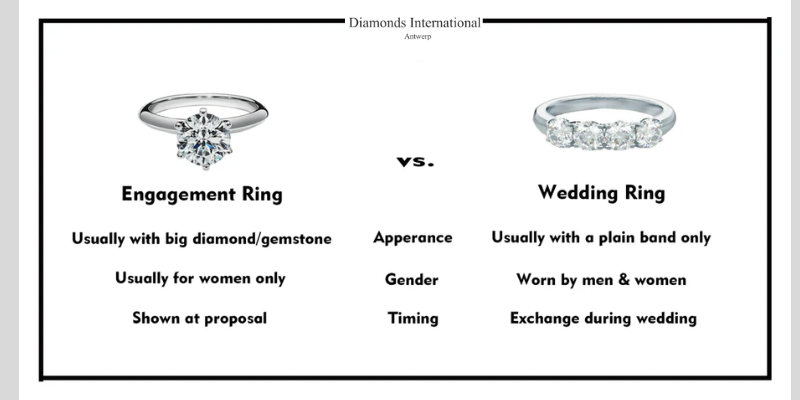The placement of a wedding ring has been a tradition followed for centuries, but the hand and finger on which it is worn can vary based on culture, religion, and personal preference. The general belief that a wedding ring should be worn on a specific hand often stems from historical and symbolic reasons. In this article, we’ll explore what hand the wedding ring traditionally goes on, how this practice varies worldwide, and how modern couples are redefining this timeless symbol of love.
History of Wedding Rings
Wedding rings date back thousands of years, with the earliest known rings originating from ancient Egypt. These rings were often made from reeds and plants, symbolizing eternity with their circular shape. The tradition of exchanging rings as a symbol of commitment spread across many ancient cultures, including the Romans and Greeks, and later became an integral part of Christian marriage ceremonies.
The custom of placing the wedding ring on the fourth finger of the left hand, known as the “ring finger,” originated from the ancient Roman belief that a vein, referred to as the “Vena Amoris” or “Vein of Love,” connected directly from this finger to the heart. Though modern science has debunked the existence of this specific vein, the symbolism continues to influence wedding ring traditions.
Wedding Ring Traditions Around the World
Different cultures and countries have unique practices when it comes to wedding ring placement. While the left hand is most common in countries like the United States, Canada, and much of Europe, many other regions place the wedding ring on the right hand.
Significance of the Left Hand in Wedding Ring Traditions
The left hand is the standard for wedding rings in several Western countries. This tradition can be traced back to Christian and Roman practices, which believed in the connection between the left hand and the heart. For many, the left hand symbolizes romance, love, and commitment.
In Western society, wearing the wedding ring on the left hand is often seen as a symbol of being married, while engagement rings are typically worn on the same finger until the wedding day, when the wedding band joins it.
Right-Hand Wedding Rings: Symbolism and Meaning
In countries such as Germany, Russia, India, and Norway, the wedding ring is commonly worn on the right hand. The choice of the right hand often holds symbolic meaning, representing trust, responsibility, and virtue.
For some, the right hand is also seen as more practical or dominant, making it the more obvious choice for wearing a cherished symbol of marital commitment.
Religious and Cultural Variations in Wedding Ring Placement

Christianity
In Christian weddings, the placement of the wedding ring on the left hand is the norm, especially in Protestant and Catholic traditions. However, in Eastern Orthodox Christianity, wedding rings are traditionally worn on the right hand.
Judaism
Jewish wedding ceremonies typically involve placing the wedding ring on the bride’s right index finger. Some brides later move the ring to the left hand after the ceremony.
Hinduism
In Hindu weddings, the left hand is often considered unclean, so wedding rings are commonly placed on the right hand.
Other Religions and Cultures
In many Middle Eastern cultures, the right hand is preferred for wearing a wedding ring due to cultural beliefs regarding purity and honor. Similarly, in many Scandinavian countries, wedding rings are also worn on the right hand.
Engagement vs. Wedding Rings: Which Hand for Each?

In many cultures, engagement rings are worn on the left hand, while the wedding ring is placed on the same finger during the marriage ceremony. However, in countries that favor the right hand for wedding rings, both rings may be worn on the right.
Wedding Ring Placement in Different Countries
- United States, Canada, United Kingdom: Left hand
- Germany, Norway, Russia: Right hand
- India: Traditionally right hand, though modern couples may choose either hand
- Brazil: Engagement rings on the right hand, wedding rings on the left hand after the ceremony
Breaking Tradition: Modern Takes on Wedding Ring Placement
While traditional practices still hold, many couples today are breaking the mold. Some may opt to wear wedding rings on whichever hand they prefer, or even on a necklace, as a way to personalize their commitment.
Common Questions About Wedding Ring Placement
Can the Ring Be Worn on Any Finger?
Though tradition dictates certain fingers, there are no strict rules. Some individuals choose to wear wedding rings on other fingers or even different jewelry items, such as necklaces.
Is There a Specific Reason for the Left Hand?
The historical belief in the “Vena Amoris” is one explanation for why the left hand is favored. Today, however, the choice is often based on cultural norms.
FAQs
Why do some people wear their wedding rings on the right hand?
In countries like Germany and Russia, the right hand is considered a more honorable or practical choice for wearing wedding rings.
Do all cultures follow the same wedding ring traditions?
No, wedding ring traditions vary significantly across different cultures and religions. Some wear the ring on the right hand, others on the left, and some even on different fingers.
Is it acceptable to wear a wedding ring on a necklace instead of a finger?
Yes, many people choose to wear their wedding rings on a necklace for convenience, safety, or personal preference.
Can I choose which hand to wear my wedding ring on?
Absolutely. Modern couples often decide based on what feels most meaningful or comfortable for them.
Why do some people wear their wedding rings on different hands on different occasions?
Some individuals switch their rings between hands for various reasons, such as cultural events, practicality, or personal preference.
What should I do if I lose my wedding ring?
If you lose your wedding ring, it’s important to replace it or find an alternative that still holds sentimental value.




